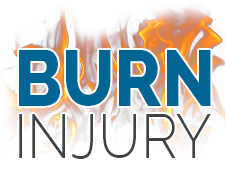Burn Scarring
Burn scarring is an unavoidable complication of burn injuries. Minor burns may heal without scarring. In severe cases, burn scarring may be permanent. Depending on the severity of the burn injury, burn scarring may also cause functional damage to the affected area. Burn patients often have difficulty recovering from the psychological impact of burn scarring. With developments in burn treatment, burn scarring has been significantly reduced in the past decades.
What Is a Scar?
Scarring is a result of the natural process that the body uses to heal burns and other types of skin injuries. Collagen is a protein that forms part of the skin’s connective tissue. When an injury such as a burn occurs, the body produces excess collagen in the affected area. The collagen in a scar is the same as the collagen in the skin. However, scar collagen fibers develop in a different and “less organized” pattern. This causes the change in texture and appearance.
Scar Formation
The formation of a scar depends on several factors. The size, scope, and severity of the burn or other injury are the primary factors. The patient’s genes, sex, age, and ethnicity will also play a role in the development of scar tissue.
Types of Burn Scarring
There are three main types of burn scarring. These are hypertrophic scars, keloid scars, and contractures. The type of burn scarring that forms primarily depends on the depth and location of the burn injury.
Hypertrophic Scars
Hypertrophic scars are confined to the site of the injury. These scars typically appear red and raised. Hypertrophic scars may be treated with steroid injections into the affected skin. Most burn patients will develop hypertrophic scars.
Keloid Scars
Keloid scars are a thicker type of burn scar that grow beyond the burned area. This type of scar is the result of an overgrowth of scar tissue. Typically, keloid scars are pink o red in color. Over time, the scar color may fade to a tan color.
Burn Scar Contractures
Burn scar contracture occurs when the skin surrounding a burn begins to contract, or pull together. As a result, the patient may experience a restriction of movement in the affected area. When the burn injury occurs near important joints such as the hands, the patient may face debilitating issues due to interference with daily life.
Preventing Burn Scarring
The most effective timeframe for preventing burn scarring is the treatment and healing process. Proper care can expedite the healing process and reduce the formation of scars. In a hospital, specialists work to prevent burn scarring with the use of dressings such as gauze, gels, and creams. Pressure garments are tight-fitting clothes that can help prevent scarring in deeper burns. Contractures can be prevented using splints to keep joints straight. Exercises to promote range of motion should also be practiced often while the skin heals.
Patients with minor burns can prevent burn scarring by:
- Immediately rinsing the burn with cool water
- Cleaning the burn area to prevent infection
- Keeping the burn area covered and moist
- Applying topical treatments such as aloe, ointments, or creams
- Periodically massaging a closed scar to improve long-term healing
Sources:
Pedragosa, Robert, et al. “Blisters over Burn Scars in a Child.” The British Journal of Dermatology 115.4 (1986): 501-506. MEDLINE with Full Text. Web. 30 Dec. 2013.
van der Wal, Martijn B A, et al. “Rasch Analysis of the Patient and Observer Scar Assessment Scale (POSAS) in Burn Scars.” Quality Of Life Research: An International Journal of Quality of Life Aspects of Treatment, Care and Rehabilitation 21.1 (2012): 13-23. MEDLINE with Full Text. Web. 30 Dec. 2013.
Wal, Martijn B. A., et al. “Outcome after Burns: An Observational Study on Burn Scar Maturation and Predictors for Severe Scarring.” Wound Repair & Regeneration 20.5 (2012): 676-687. Academic Search Complete. Web. 30 Dec. 2013.
Widgerow, Alan D. “New advances in widespread/burn scar management.” Expert Review of Dermatology 8.6 (2013): 589+. Academic OneFile. Web. 30 Dec. 2013.













